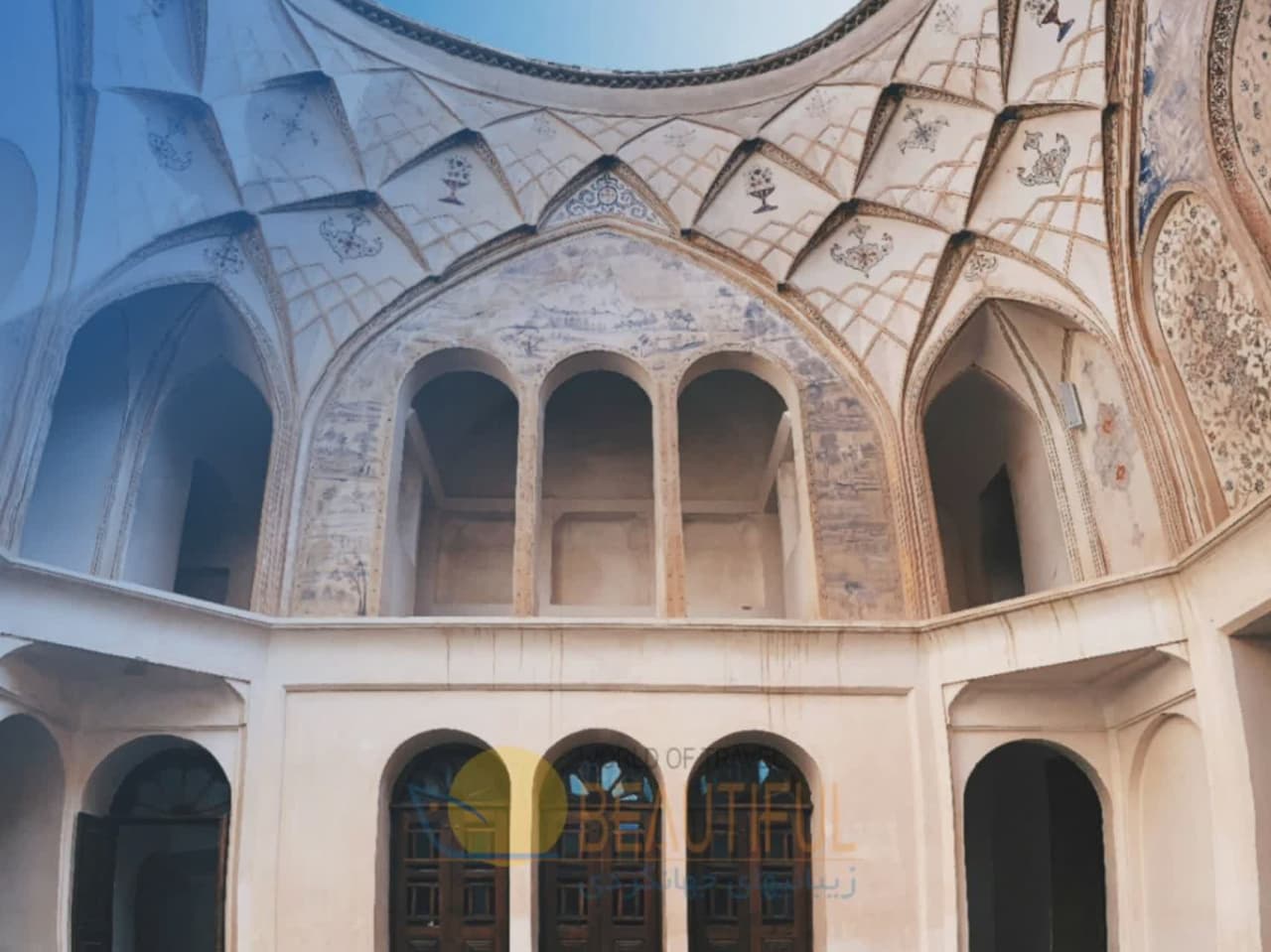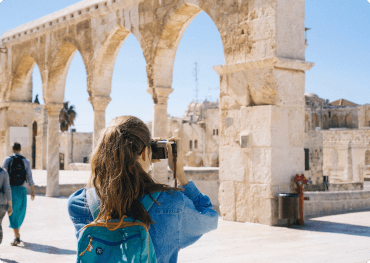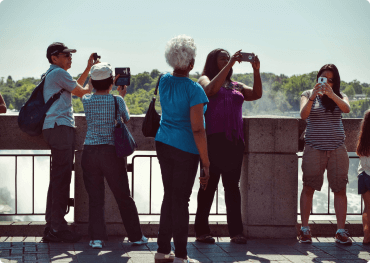
CL 516
Package Details
Day 1: Flight from your home country to Tehran
We prepare ourselves for a fabulous trip to Great Persia. Arrival to Tehran, after custom formality, meet and assist at airport and transfer to the Hotel.
O/N: Tehran
Day 2: Tehran
After breakfast, full day visit Tehran: Niyavaran Palace, Saad Abad Palace, Darband.
O/N: Tehran
The NiavaranComplex is a historical complex situated in Shemiran, Tehran (Greater Tehran), Iran. It consists of several buildings and monuments built in the Qajar and Pahlavi eras. The complex traces its origin to a garden in Niavaran region, which was used as a summer residence by Fath-Ali Shah of the Qajar Dynasty. A pavilion was built in the garden by the order of Naser ed Din Shah of the same dynasty, which was originally referred to as Niavaran House, and was later renamed Saheb Qaranie House. The pavilion of Ahmad Shah Qajar was built in the late Qajar period.During the reign of the Pahlavi Dynasty, a modern built mansion named Niavaran House was built for the imperial family of Mohammad Reza Pahlavi. All of the peripheral buildings of the Saheb Qaranie House, with the exception of the Ahmad Shahi Pavilion, were demolished, and the buildings and structures of the present-day complex were built to the north of the Saheb Qaranie House. In the Pahlavi period, the Ahmad Shahi Pavilion served as an exhibition area for the presents from world eaders to the Iranian monarchs.
The Sa'dabad Complex is a complex built by the Qajar and Pahlavi monarchs, located in Shemiran, Greater Tehran, Iran. Today, the official residence of the President of Iran is located adjacent to the complex.
The complex was first built and inhabited by Qajar monarchs in the 19th century. After an expansion of the compounds, Reza Shah of the Pahlavi Dynasty lived there in the 1920 s, and his son, Mohammad Reza Pahlavi, moved there in the 1970 s. After the 1979 Revolution, the complex became a museum.
Darband of Tehran, formerly a village in the summer resort (yeylāq) of Šamīrān, situated at an elevation of 1,700 m on the extreme northern edge of the capital, where the Alborz foothills begin. A stream of the same name flows through it, and in July 1987 it flooded, destroying the bāzār of Tajrīš. Since the 1950s, when Šamīrān and Tajrīš were gradually incorporated into Tehran, Darband has become the yeylāq quarter par excellence, adjacent to the palaces of Saʿdābād; it has a hotel, restaurants, and cafés, which are frequented by members of the more prosperous social classes. Darband has become increasingly popular since the 1970s, especially as the point of departure for hikes and climbs toward the Towčāl (stopping at the Šīrpalā shelter in the Osūn valley). On both winter and summer holidays the square and single main street of this old mountain village, which can be reached easily via urban transportation, are the setting for tens of thousands of strollers, and many boutiques and teahouses (čāy-ḵānas) serve hikers along the whole length of the valley as far as Pas-qalʿa.
Owing to the huge growth in the population of Tehran, as well as the integration of Darband into the city, tourism there remains undiminished, despite the development of other, similar resorts near the capital (e.g., installation of a telpher from Towčāl to Valanjak and construction of a road from Emāmzāda Dāwūd).
Day 3: Tehran – Kashan
After breakfast, check out hotel and drive to Kashan (247 km).
Afternoon arrival to Kashan and visit Fin Garden.
O/N: Kashan.
Fin Garden, or Bagh-e Fin, located in Kashan, Iran, is a historical Persian garden. It contains Kashan's Fin Bath, where Amir Kabir, the Qajarid chancellor, was murdered by an assassin sent by King Nasereddin Shah in 1852. Completed in 1590, the Fin Garden is the oldest extant garden in Iran.
The origins of the garden may be anterior to the Safavid period; some sources indicate that the garden has been relocated from another place, but no clear picture of it has been found.
Day 4: Kashan
After breakfast, full day visiting Kashan, Broujerdi and Tabatabai houses, Soltan amir Ahmad bath,
Aqhabozorg Mosque, Seialk ancient hill.
O/N: Kashan.
Home Borujerdian the historic city of Kashan is. The building is located in the neighborhood Sultan Mir Ahmad and in the second half of the 13th century Hijri built in Qajar era and was registered under the number 1083 in the national index. The house has a beautiful crescent-shaped symmetrical vents on the roof of the hall and pergola on one of the most beautiful manifestations of Persian architecture to display it. So that the inscriptions on all four sides of the hall, the building dates back to 1292 BC E..
Home Tabatabaian which was registered under number 1504, in the second half of the 13th century AH by Haj Seyed Jafar Tabatabai merchants Natanz resident of Kashan in the neighborhood Sultan Amir Ahmad was built.
Architect manufacturer of the master Ustad Ali Maryam and plaster involved in the art and drawings by students Mirza Abul Hassan Sani-ol-Molk Ghaffari Kashani, and under him were doing.
Sultan Amir Ahmad Bathhouse, Hammam-e Sultan Amir Ahmad, also known as the Qasemi Bathhouse, is a traditional Iranian public bathhouse in Kashan, Iran. It was constructed in the 16th century, during the Safavid era; however, the bathhouse was damaged in 1778 as a result of an earthquake and was renovated during the Qajar era. The bathhouse is named after Imamzadeh Sultan Amir Ahmad, whose mausoleum is nearby.
Agha Bozorg Mosque is a historical mosque in Kashan, Iran. The mosque was built in the late 18th century by master-mimar Ustad Haj Sa'ban-ali.
The mosque has been described as "the finest Islamic complex in Kashan and one of the best of the mid-19th century. Noted for its symmetrical design, it consists of two large iwans, one in front of the mihrab and the other by the entrance. The courtyard has a second court in the middle which comprises a garden with trees and a fountain.
Tepe Sialk is a large ancient archeological site) in a suburb of the city of Kashan, Isfahan Province, in central Iran, close to Fin Garden. The culture that inhabited this area has been linked to the Zayandeh River Culture.
The Sialk ziggurat was built around the 3000 BC. A joint study between Iran's Cultural Heritage Organization, the Louvre, and the Institute Francais de Recherche en Iran also verifies the oldest settlements in Sialk to date back to 5500–6000 BC.
Sialk, and the entire area around it, is thought to have originated as a result of the pristine large water sources nearby that still run today. The Cheshmeh ye Soleiman ("Solomon's spring") has been bringing water to this area from nearby mountains for thousands of years. The Fin garden, built in its present form in the 17th century, is a popular tourist attraction. It is here that the kings of the Safavid dynasty would spend their vacations away from their capital cities. It is also here that Piruz Nahavandi (Abu-Lu'lu'ah), the Persian assassin of Caliph Umar, is buried. All these remains are located in the same location where Sialk is.
Day 5: Kashan – Isfahan
After breakfast, drive to Isfahan (483 km).In the way visit Nooshabad. Evening arrival to Isfahan.
O/N: Isfahan
Nooshabad: What is called the Underground City, is known in dense structures, complex and wide as the narrow labyrinthine corridors and rooms is small sizes. Huy set in the old city has been formed and expanded to the current level city. The area of this city because of the relationship between communities and the protection of lives and property in times of great insecurity and spread both horizontally and vertically.
The historical collection pits thirty Shahrnush Abad city Aran Bidgol underground city called "Oi," which is amazing for all visitors. City Noushabad capital Anushiravan is Sassanid king in the northern city of Kashan and Aran Bidgol West town of Kashan is located 10 kilometers.
Day 6: Isfahan
After breakfast, full day visit Isfahan. At night visit visit old bridiges ( Khajoo & Si o Se Pol).
O/N: Isfahan
Naqsh-e Jahan Square known as Imam Square, formerly known as Shah Square, is a square situated at the center of Isfahan city, Iran. Constructed between 1598 and 1629, it is now an important historical site, and one of UNESCO's World Heritage Sites. It is 160 meters (520 ft.) wide by 560 meters (1,840 ft) long (an area of 89,600 square meters (964,000 sq. ft.)). The square is surrounded by buildings from the Safavid era. The Shah Mosque is situated on the south side of this square. On the west side is the Ali Qapu Palace. Sheikh Lotf Allah Mosque is situated on the eastern side of this square and at the northern side Keisaria gate opens into the Isfahan Grand Bazaar.
Ali Qapu is a grand palace in Isfahan, Iran. It is located on the western side of the Naqsh e Jahan Square, opposite to Sheikh Lotfollah Mosque, and had been originally designed as a vast portal. It is forty-eight meters high and there are seven floors, each accessible by a difficult spiral staircase. In the sixth floor, Music Hall, deep circular niches are found in the walls, having not only aesthetic value, but also acoustic.
Fresco from the portico of the palace, depicting a Persian woman
The name Ali Qapu, from Arabic "Ālī" (meaning "imperial" or "great"), and Turkic "Qāpū" (meaning "gate"), was given to this place as it was right at the entrance to the Safavid palaces which stretched from the Naqsh e Jahan Square to the Chahar Baq Boulevard. The building, another wonderful Safavid edifice, was built by decree of Shah Abbas I in the early seventeenth century. It was here that the great monarch used to entertain noble visitors, and foreign ambassadors. Shah Abbas, here for the first time, celebrated the Nowruz (Iranian New Year) of 1006 AH / 1597 C E.
Ali Qapu is rich in naturalistic wall paintings by Reza Abbasi, the court painter of Shah Abbas I, and his pupils. There are floral, animal, and bird motifs in his works. The highly ornamented doors and windows of the palace have almost all been pillaged at times of social anarchy.
Only one window on the third floor has escaped the ravages of time. Ali Qapu was repaired and restored substantially during the reign of Shah Sultan Hussein, the last Safavid ruler, but fell into a dreadful state of dilapidation again during the short reign of invading Afghans. Under the reign of Nasir Ol Din Shah e Qajar (1848–96), the Safavid cornices and floral tiles above the portal were replaced by tiles bearing inscriptions.
Sheikh Lotfollah Mosque is one of the architectural masterpieces of Safavid Iranian architecture, standing on the eastern side of Naghsh-i Jahan Square, Isfahan, Iran.
Construction of the mosque started in 1603 and was finished in 1619. It was built by the chief architect Shaykh Bahai, during the reign of Shah Abbas I of the Safavid dynasty.
The Bazaar of Isfahan or Isfahan Bazaar is a historical market in Isfahan, Iran, one of the oldest and largest bazaars in the Middle East, dating back to the 17th century. The bazaar is a vaulted two-kilometre street linking the old city with the new.
The Bazaar of Isfahan is located in downtown old Isfahan, Iran, in the northern section of the Naqsh-e Jahan Square. The main entrance called Qeisarieh and you can walk all along to the Friday mosque Jameh Mosque the oldest mosque in Isfahan, and one of the oldest in Iran.
Before you enter the Grand Bazaar, if you look back you will see the magnificent view of the square, which is one of the biggest squares in the entire world. All around the square are bazaars full of magnificent Persian handicrafts.
Khaju Bridge is a bridge in the province of Isfahan, Iran, which has been described as the finest in the province. It was built by the Persian Safavid king, Shah Abbas II around 1650, on the foundations of an older bridge.
Serving as both a bridge, and a dam (or a weir), it links the Khaju quarter on the north bank with the Zoroastrian quarter across the Zayandeh River. Although architecturally functioning as a bridge and a weir, it also served a primary function as a buildingand a place for public meetings. This structure was originally decorated with artistic tilework and paintings, and served as a teahouse.
Allāhverdi Khan Bridge, popularly known as Si-o-seh pol “The bridge of thirty-three spans” is one of the eleven bridges of Isfahan, Iran and the longest bridge on Zayandeh River with the total length of 297.76 metres (976.9 ft). It is highly ranked as being one of the most famous examples of Safavid bridge design.
It was constructed by the finance and the inspection of Allahverdi Khan Undiladze chancellor of Shah Abbas I, an ethnic Georgian, it consists of two rows of 33 arches from either sides, left and right. There is a larger base plank at the start of the bridge where the Zayandeh River flows under it, supporting a tea house which nowadays is abandoned due to the shortage of water and the river drought.
Day 7: Isfahan
After breakfast, Full day visit Isfahan: Chehel Sotoun, Hasht Behesht, Vank Cathedral.
O/N: Isfahan
Chehel Sotoun (Forty Columns) is a pavilion in the middle of a park at the far end of a long pool, in Isfahan, Iran, built by Shah Abbas II to be used for his entertainment and receptions. In this palace, Shah Abbas II and his successors would receive dignitaries and ambassadors, either on the terrace or in one of the stately reception halls.
The name, meaning "Forty Columns" in Persian, was inspired by the twenty slender wooden columns supporting the entrance pavilion, which, when reflected in the waters of the fountain, are said to appear to be forty.
Hasht Behesht, meaning "Eight Paradises" is a Safavid era palace in Isfahan.
It was built in 1669 and is today protected by Iran's Cultural Heritage Organization. Of more than forty mansions which existed in Isfahan during the rule of Safavids, this is the only one left today.
Vank Cathedral also known the Church of the Saintly Sisters, is a cathedral located in the New Julfa district of Isfahan, Iran. It is commonly referred to as the Vank (Վանք), which means "monastery" or "convent" in Armenian language.The cathedral was established in 1606, dedicated to the hundreds of thousands of Armenian deportees that were resettled by Shah Abbas I during the Ottoman War of 1603-1618.
The varying fortunes and independence of this suburb across the Zayande River and its eclectic mix of European missionaries, mercenaries and travelers can be traced almost chronologically in the cathedral's combination of building styles and contrasts in its external and internal architectural treatment.
Day 8: Isfahan – Shiraz
After breakfast, check out hotel and drive to Shiraz (483 km).In the way visit Perspolis. Evening arrival to Shiraz. At night visit Hafez & Saadi tombs.
O/N: Shiraz
Persepolis the name of one of the ancient cities of Iran that joined over the years, the capital’s stately and ceremonial monarchy at the time of the Achaemenid Empire was. In this ancient city called Persepolis palace that during the reign of Darius, Xerxes and Artaxerxes was built and was built for about 200 years. On the first day of the New Year, many groups from different countries representing Satrapyha or governments gathered in Persepolis with diverse took offerings and gifts were presented to the king.
Persepolis in 518 BCE as the new capital of the Achaemenid the gamers began.
Founder of Persepolis, Darius was, of course, after his son Xerxes and his grandson Artaxerxes I to extend this series to expand it added. Many existing knowledge about the history and culture of the Achaemenid stone inscriptions and Flznvshthhayy is available for the palaces and on the walls and the tablet is engraved Sumner has estimated that the plain of Persepolis which contains 39 residential camp was in the Achaemenid period 43, 600 people had. Historians believe that Alexander the Macedonian commander Greek in 330 BC, invaded Iran and burned Persepolis and probably a large part of the books, Achaemenid art and culture destroyed by it. However, the ruins of this place is still up and archeology of its ruins signs of fire and rush to acknowledge it.This place since 1979, one of Iran's record on the UNESCO World Heritage is.
The Tomb of Hafez and its associated memorial hall, the Hāfezieh, are two memorial structures erected in the northern edge of Shiraz, Iran, in memory of the celebrated Persian poet Hafez. The open pavilion structures are situated in the Musalla Gardens on the north bank of a seasonal river and house the marble tomb of Hafez. The present buildings, built in 1935 and designed by the French architect and archaeologist André Godard, are at the site of previous structures, the best-known of which was built in 1773. The tomb, its gardens, and the surrounding memorials to other great figures are a focus of tourism in Shiraz.
The Tomb of Saadi is a tomb and mausoleum dedicated to the Persian poet Saadi in the Iranian city of Shiraz. Saadi was buried at the end of his life at a Khanqah at the current location. In the 13th century a tomb built for Saadi by Shams al-Din Juvayni, the vizir of Abaqa Khan. In the 17th century, this tomb was destroyed. During the reign of Karim Khan was built a mausoleum of two floors of brick and plaster, flanked by two rooms. The current building was built between 1950 and 1952 to a design by the architect Mohsen Foroughi and is inspired by the Chehel Sotoun with a fusion of old and new architectural elements. Around the tomb on the walls are seven verses of Saadi’s poems.
Day 9: Shiraz
After breakfast, full day visit Shiraz: Qavam House, Vakil Market & Bath & Mosque. Evening visit Eram Garden.
O/N: Shiraz
Qavam House: The consistency of the prince in 1252. BC Persian rule was appointed to her home in the neighborhoods (neighborhoods Balakft), the historic buildings and residential construction that led to the formation of consistency. This sets the consistency between the public gardens known today by the name of its exterior facade famous Orangery is consistency.
Between 1257 and 1267 coincided with the consistency of Nasser al-Din Shah Qajar and has been completed. The complex consists of several elements that most of these elements are Gchynh bathroom, Hosseinieh consistency, consistency schools (house beverages), inner consistency (home ornament ol), Court House consistency (Orangery), consistency and an en suite bathroom stalls and Znjyrkhanh (now defunct). Of course, there Bazarchhay in the series due to street construction Lotf Ali Khan is gone.
The Garden of Shiraz Qajar era buildings in the neighborhood Balakft and in the eastern end of the street Lotf Ali Khan is located. This range is almost the endpoints and eastern gates of the old city, where in the past the government, and the Sheikh Abvzrh have been Monzer goal is the establishment.
Vakil Bazaar collection of his era, and in Shiraz, after the municipal field, near Karim Khan Citadel taken place and the effect on 17 Persian date Tir 1351 with registration number 924 as one of the national monuments has been registered.Vakil Bazaar in Shiraz, one of the most traditional and historical markets of Iran is. The market at the behest of Karim Khan Zand (1172 - 1193 AH.) Made, now at the center of the city of Shiraz (East Martyrs' Square) is located. Next to other locations such as mosques and historic Bath lawyer also located.
Vakil Bath is an old public bath in Shiraz, Iran. It was a part of the royal district constructed during Karim Khan Zand's reign, which includes Arg of Karim Khan, Vakil Bazaar, Vakil Mosque and many administrative buildings.The monument is inscribed with the number 917 on the list of national works of Iran.
The Vakil Mosque is a mosque in Shiraz, southern Iran, situated to the west of the Vakil Bazaar next to its entrance. This mosque was built between 1751 and 1773, during the Zand period; however, it was restored in the 19th century during the Qajar period. Vakil means regent, which was the title used by Karim Khan, the founder of Zand Dynasty. Shiraz was the seat of Karim Khan’s government and he endowed many buildings, including this mosque.
Eram Garden is a historic Persian garden in Shiraz, Iran.The garden, and the building within it, are located at the northern shore of the Khoshk River in the Fars province. Both the building and the garden were built during the middle of thirteenth century by the Ilkhanate or a paramount chief of the Qashqai tribes of Pars. The original layout of the garden however, with its quadripartite Persian Paradise garden structure was most likely laid in eleventh century by the Seljuqs, and was then referred to as the "Bāq e Shāh" ("the king's garden" in Persian) and was much less complicated or ornamental.
Day 10: Departure
Midnight, check out hotel and transfer to International airport to flight to your home.
Details
Pellentesque accumsan magna in augue sagittis, non fringilla eros molestie. Sed feugiat mi nec ex vehicula, nec vestibulum orci semper. Class aptent taciti sociosqu ad litora torquent per conubia nostra, per inceptos himenaeos. Donec tristique commodo fringilla. Duis aliquet varius mauris eget rutrum. Nullam sit amet justo consequat, bibendum orci in, convallis enim. Proin convallis neque viverra finibus cursus. Mauris lacinia lacinia erat in finibus.
Pellentesque accumsan magna in augue sagittis, non fringilla eros molestie. Sed feugiat mi nec ex vehicula, nec vestibulum orci semper. Class aptent taciti sociosqu ad litora torquent per conubia nostra, per inceptos himenaeos. Donec tristique commodo fringilla.
- Specilaized Bilingual Guide
- Private Transport
- Entrance Fees
- Box Lunch,Water,Dinner and Snacks
Pellentesque accumsan magna in augue sagittis, non fringilla eros molestie. Sed feugiat mi nec ex vehicula, nec vestibulum orci semper. Class aptent taciti sociosqu ad litora torquent per conubia nostra, per inceptos himenaeos. Donec tristique commodo fringilla.
- Specilaized Bilingual Guide
- Private Transport
- Entrance Fees
- Box Lunch,Water,Dinner and Snacks
Pellentesque accumsan magna in augue sagittis, non fringilla eros molestie. Sed feugiat mi nec ex vehicula, nec vestibulum orci semper. Class aptent taciti sociosqu ad litora torquent per conubia nostra, per inceptos himenaeos. Donec tristique commodo fringilla.
- Specilaized Bilingual Guide
- Private Transport
- Entrance Fees
- Box Lunch,Water,Dinner and Snacks
Pellentesque accumsan magna in augue sagittis, non fringilla eros molestie. Sed feugiat mi nec ex vehicula, nec vestibulum orci semper. Class aptent taciti sociosqu ad litora torquent per conubia nostra, per inceptos himenaeos. Donec tristique commodo fringilla.
- Specilaized Bilingual Guide
- Private Transport
- Entrance Fees
- Box Lunch,Water,Dinner and Snacks
Pellentesque accumsan magna in augue sagittis, non fringilla eros molestie. Sed feugiat mi nec ex vehicula, nec vestibulum orci semper. Class aptent taciti sociosqu ad litora torquent per conubia nostra, per inceptos himenaeos. Donec tristique commodo fringilla.
- Specilaized Bilingual Guide
- Private Transport
- Entrance Fees
- Box Lunch,Water,Dinner and Snacks






















